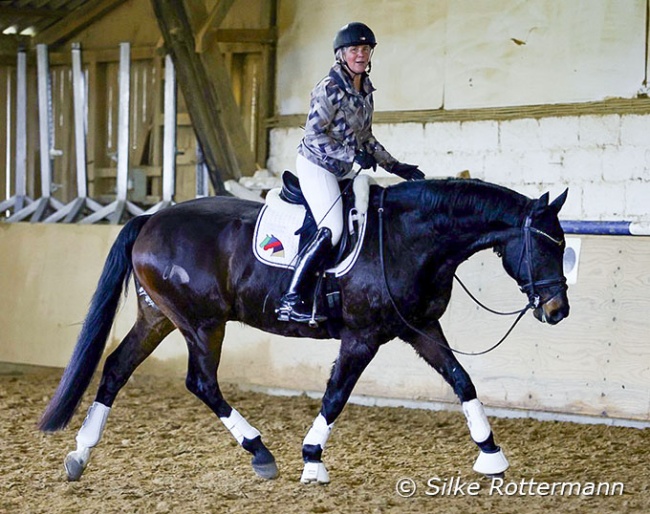
This article is part of the 2024 Burgtagung coverage:
Part I: Today for Tomorrow - A Weekend Dedicated to Good Equestrian Sport at the 2024 Burgtagung
Part II: Dr. Britta Schöffmann: "Everything Was Better in the Past, Wasn’t It?"
Part III: Anja Beran - "Schooling The Eye"
-- Text and Photos © Silke Rottermann for Eurodressage
More than a decade ago German trainer and Grand Prix rider Uta Gräf took care of a little dressage revolution when she was launched on the international scene with her shiny black Holsteiner stallion Le Noir (by Leandro x Caletto I). Her strikingly wild platinum blonde hair and big smile are her trademarks, just like her horse keeping and her versatile training out of the ordinary of the dressage world.
The feeling Uta could give to the public and for which they loved her is that dressage is a fun affair for rider and equine and it is exactly this impression which needs to be renewed these days. The Burgtagung was one opportunity to rekindle it.
Fair and Delightful Dressage Training
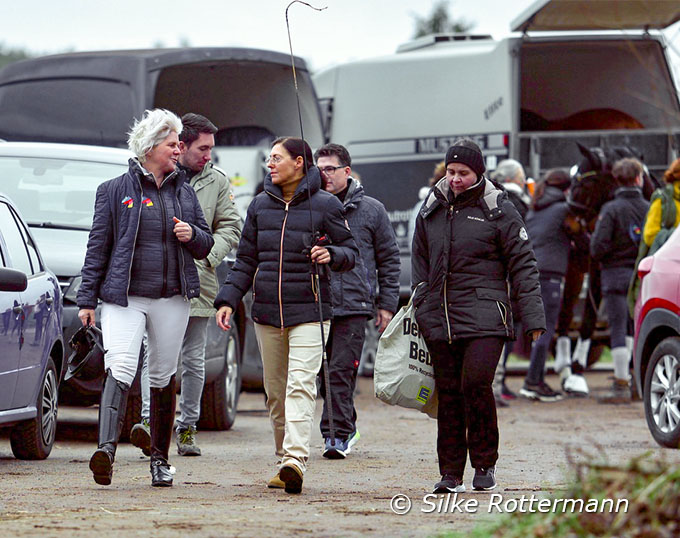
I knew I was here to report on Uta Gräf riding with very renowned German classical trainer Anja Beran, but I confess I was also here to regain my belief and restore my faith that horses can be trained to the highest level in a fair way and be what the FEI sometimes quite hypocritically calls "happy athletes."
The rather small and dark indoor arena was soon bursting with spectators, sitting on beer benches or standing wherever there was a little space available. The two main protagonists, Uta Gräf and Anja Beran, appeared on the scene and it became soon clear that despite both being totally different types, they have a refreshing sense of humor in common which turned out to be the icing on the cake of an event to remember.
Maintaining the horse’s cheerfulness as it moves up the levels
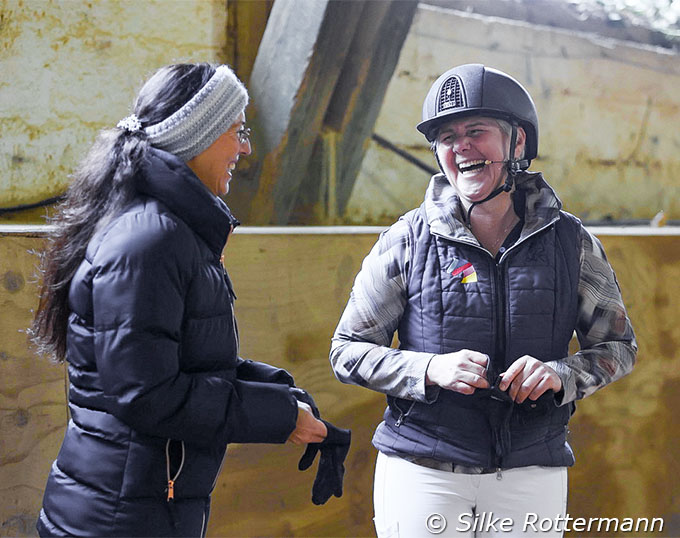
from the start
The first of two horses Uta Gräf was to ride under Beran’s supervision was the 13-year-old dark bay called gelding San Diamond (by Sandro Hit - Rouletto), owned by Anna and Renate Timme. As Gräf keeps him together with 35 other horses in a huge herd "SD", as he is nick-named, was not clipped and had a little hay tummy which the horse certainly did not worry about.
"The horse was bought rather cheaply by his owner to become a pleasure horse and was brought to us for three months to be broken in. But as he was extremely willing, he continued to be kept with us and won through the levels. Now he has won S-level and is in for even more. He has no extreme movements and we never asked more of him than he is able to give. He is a great horse who I enjoy riding and our highest goal is to maintain his cheerfulness also when he moves up the levels. I never thought we would get that far and that we would get that successful," Gräf said while introducing San Diamond.
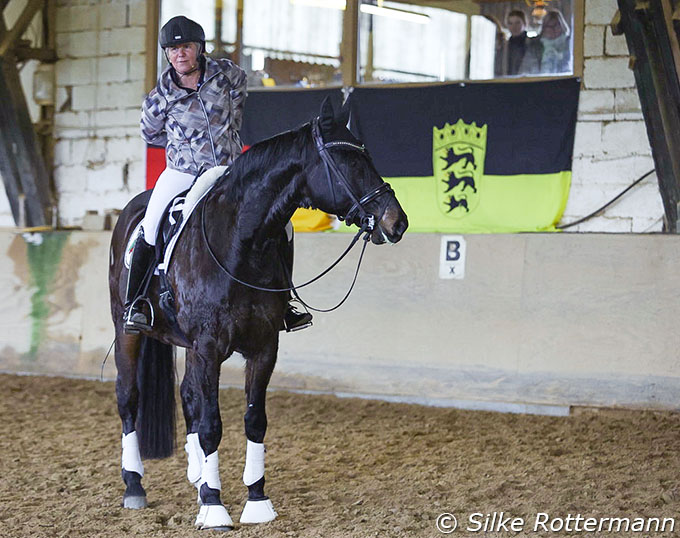
as he has left
What was striking to observe in these first few minutes in which Gräf introduced the horse to the audience was the calm demeanor of the Oldenburger gelding. In walk with totally given reins San Diamond showed remarkable relaxation, taking the new surroundings in with an awake but content eye, displaying total trust in his rider.
Get the Feel Good Feeling in the Warm-Up-Phase
During the warm-up phase Uta showed the horse in a long frame in trot in which he went diligently and willing from the very first step on, although she soon changed to canter "because it is easier for him and he is very well balanced in this gait. I want him to carry himself, but if he shows me he wants to stretch in this phase I allow it." Transitions between canter and trot followed with the horse visibly beginning to swing more in his trot movement.
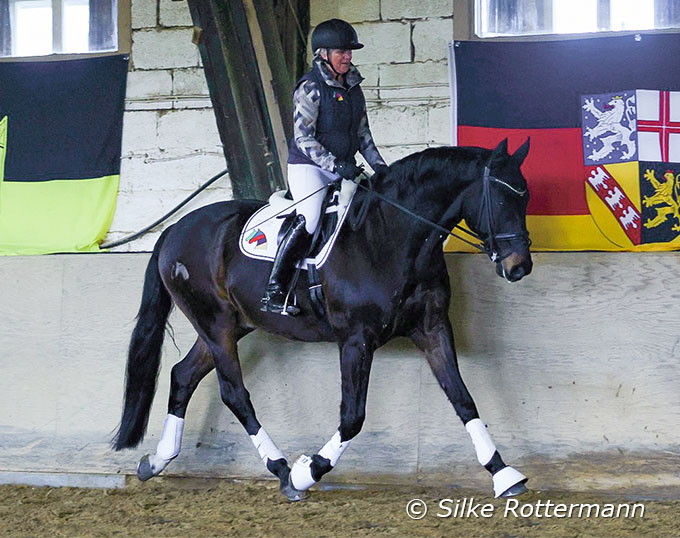
can easily see here that the horse is working
over his back and off the forehand in a horizontal
balance
Gräf immediately put the advice into practice and her wonderfully cooperative horse also did not loose his diligence and will to go forward in a quieter tempo. When she allowed him to stretch forward-downward, the auditors took on the chance to interact and asked if the forward-downward Uta showed was correct and also how to get to such an exemplary stretch. Beran rplied that "the neck was long, but it should not be manipulated until the horse eats sand and then be kept there for 20 minutes, because a horse would not move like that in nature."
Uta, who is known for her exemplary forward-downward stretches as an art in itself, explained that to induce such a position it is good if the rider feels if a horse wants to stretch or vice versa and then very progressively lengthen the reins, wait a tiny moment, and then push slightly with the leg. This interplay of hand and leg continues. "In principle the seat tells the horse the way is clear," she said.
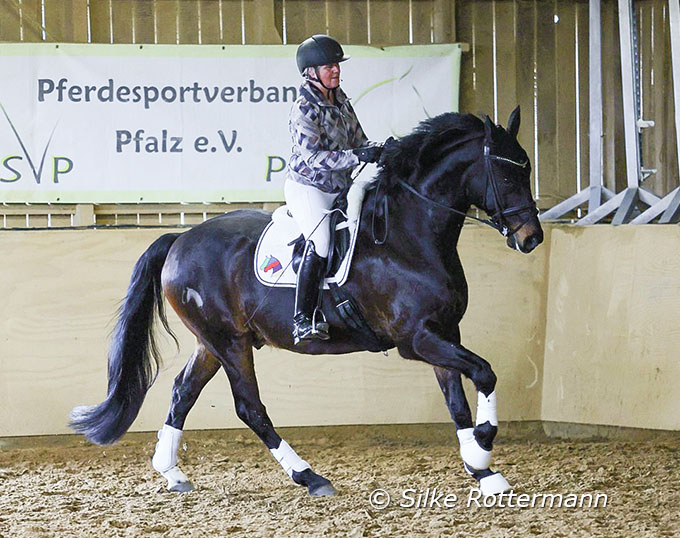
the corners
Gräf then rode with a big smile a copybook volte in canter with giving and retaking the reins to prove the horse’s ability to execute a volte, before turning onto the diagonal and showing a couple of nice flying changes, the horse calm, straight as a die and forward, followed by six one-time changes along the long side of the arena of the very same quality after which the audience burst into rapturous applause. Beran mischievously commented, "very good, very natural, but start off earlier with the flying changes on the diagonal, otherwise you cannot pass the corner in a quarter-volte."
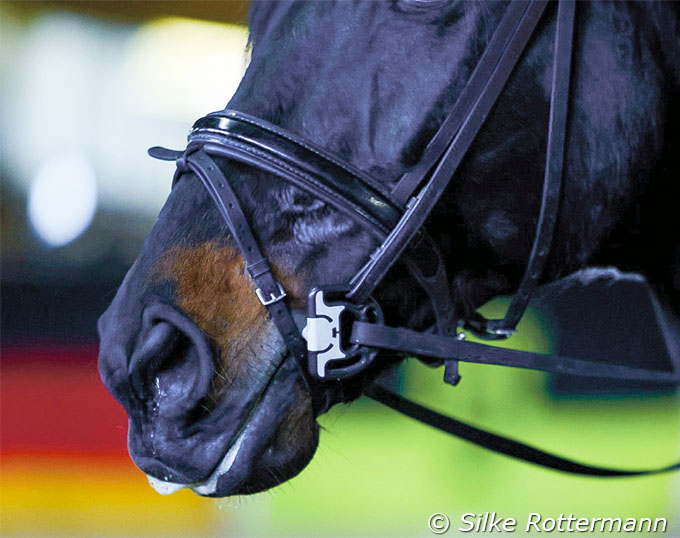
ridden horse shows a lipstick-foam
Approaching the Piaffe
"I would be happy if you could give me some advice regarding piaffe, perhaps you do it differently," Uta Gräf turned to Anja Beran and emphasized that there is no pressure if the horse would not manage to learn these demanding High School movements. Beran took an optimistic outlook by saying some of her horses have only 1/10th of the talent of San Diamond and still learnt it.
First Gräf demonstrated her approach by riding transitions between trot and walk and attempting to get first half steps during the transition to walk, asking Beran to give her opinion what she would do differently. The Bavarian frankly said that she would only do it that way with a horse who is already able to piaffe, because "this procedure misleads a horse learning the piaffe in a way that he shortly scuttles and thinks he has to continue forward again." As an alternative approach Beran suggested riding a sequence of trot, halt, rein-back and then trot on from the rein-back. San Diamond demonstrated his great throughness by showing a quiet and exemplary halt and a straight willing rein-back with the poll remaining the highest point, slightly chewing the bit to the rein aid without the slightest resistance. "It is important not to trot on too big as the hind-legs should become quick," Beran pointed.
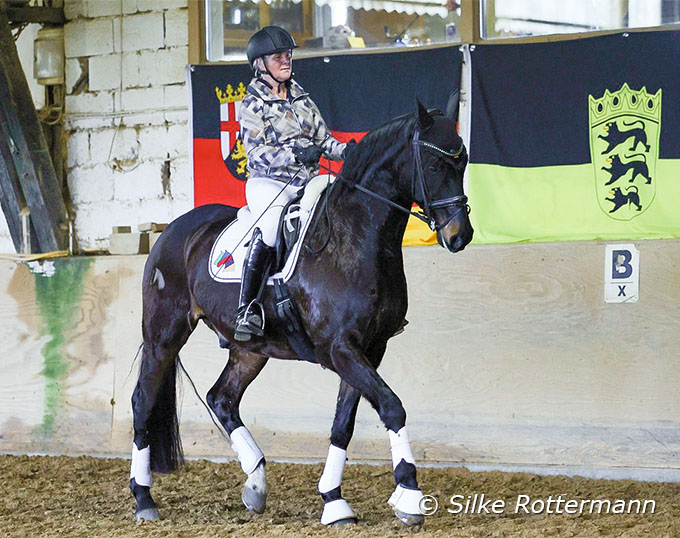
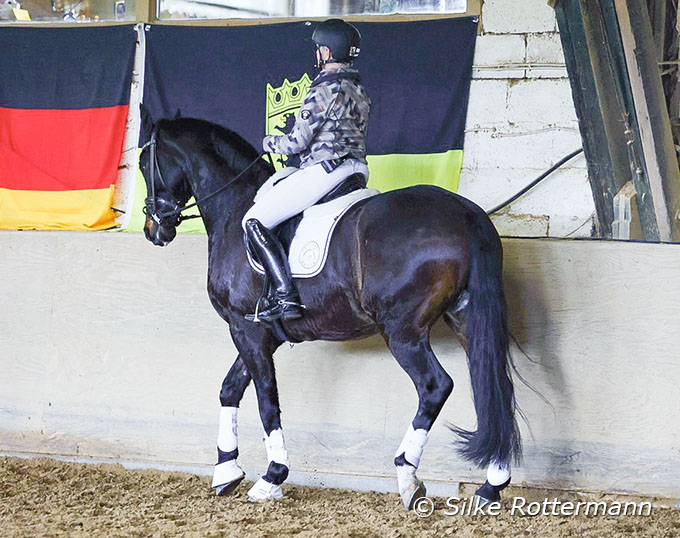
from the counted walk: San Diamond gets
the idea.
San Diamond soon showed the first timid diagonal steps after this approach and was immediately praised and allowed to stretch and go forward.
No Witchcraft
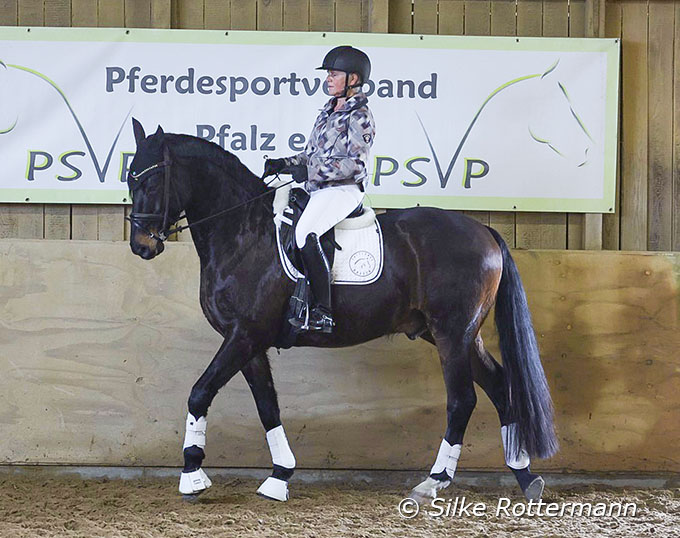
San Diamond was a true paragon of a cooperative
equine partner
The fact that at no point in time San Diamond was resistant, stressed or bad tempered, but instead cooperated brilliantly and remained unchanged in his content and relaxed demeanor, proved that it is not only possible to make dressage a delight for horse and rider, but that it is not taking ages to make oneself understood to the equine partner when he is physically and mentally prepared to listen to the rider.
-- Text and Photos © Silke Rottermann for Eurodressage
Coming Soon
Part II of the Uta Gräf & Anja Berin clinic at the Burgtagung